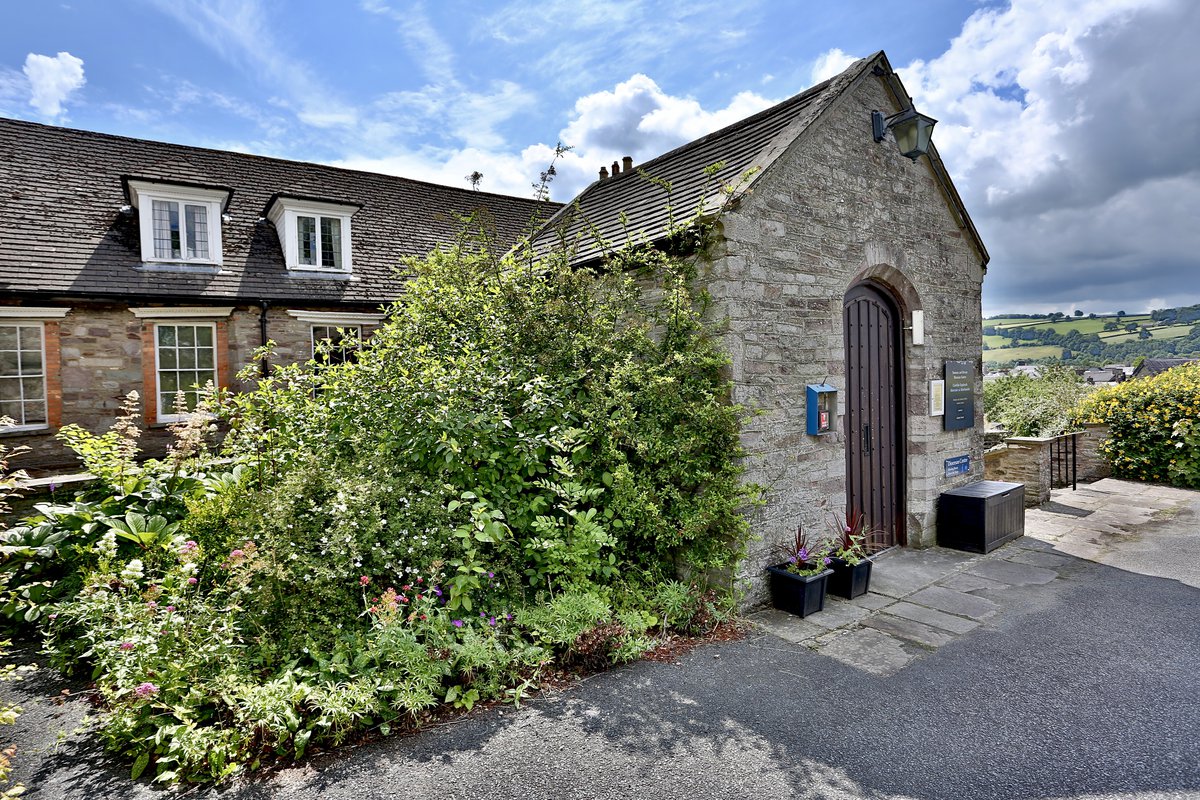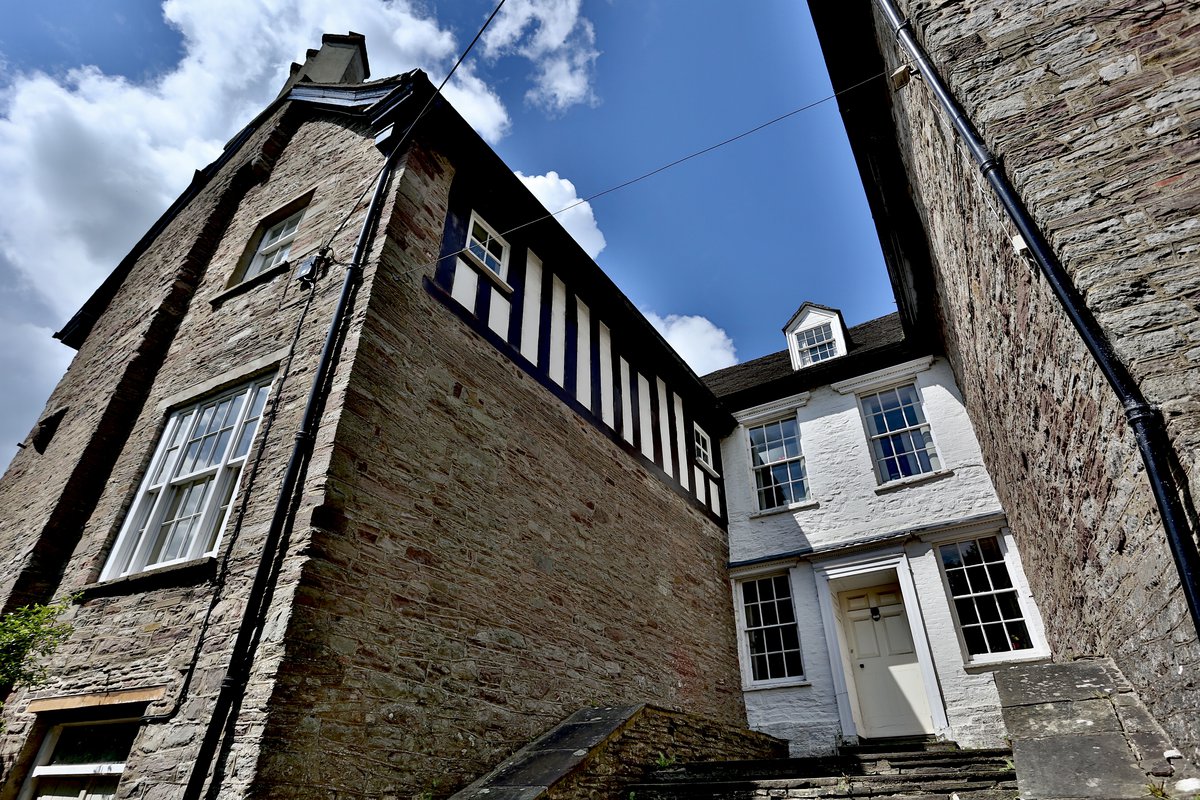Priory House (Diocesan Offices)

The Priory House was the name that was given to what is now the Diocesan Offices from at least the eighteenth century. Before the Reformation it is thought to have been the house of the Prior, the monk who was in charge of the priory and its estates. The first prior at Brecon was Walter, a monk from Battle Abbey in East Sussex, where the Battle of Hastings had been won by the Normans. Battle Abbey was the mother house of the priory at Brecon – the monastery that founded the Brecon house. The present building is medieval, probably dating in parts to the twelfth century, and was originally joined by cloisters to the church itself. It had a long Great Hall where the prior’s guests would have dined, and accommodation for the prior.
The dissolution of the monasteries in the sixteenth century saw the closure of Brecon Priory. During the 1530s Henry VIII broke with Rome and founded the Church of England so that he could end his marriage to Catherine of Aragon, and remarry in the hope of producing an heir. The prospect of gaining access to church lands, property, and silverware to add to the royal funds was another reason, and so under the direction of Thomas Cromwell (1485-1540), principal advisor to the King, the process of dissolving the monasteries began in 1536. The Priory of St John at Brecon was dissolved in 1538. The Priory House was first given to the Bishop of St Davids, then to Sir John Prise (otherwise known as Syr Siôn ap Rhys) who lived c.1502-1555. Prise was married to Cromwell’s niece, but was born in Brecon. Prise was granted the Priory lands in recognition of his service to the King and his role in supporting the Dissolution. He was also granted the Benedictine Priory of St Guthlac at Hereford, where he lived until his death in 1555.
Prise was one of the inspectors in the service of Thomas Cromwell, visiting monasteries to establish how much they were worth as part of a nationwide survey, the Valor Ecclesiasticus. Although Prise did not live at Brecon Priory, he had – and continued to have – strong connections to the area. He was appointed secretary for life of the Council in Wales and the Marches (established to govern on behalf of the Crown in Wales and the borders) and served as sheriff and justice of the peace in Breconshire, playing an important role in local law and order. In 1547 he was knighted, and elected as MP for Breconshire. As well as sustaining a long political career under 3 monarchs, Prise was known as ‘a lover of antiquity’. He collected and studied monastic manuscripts, and wrote works which drew heavily on mediaeval Welsh religious texts. Despite his role in the dissolution, Prise was instrumental in preserving the literary heritage of Wales.
The Priory House continued in the Prise family until the seventeenth century. During the First Civil War (1642-46) King Charles I stayed in the house with the royalist Sir Herbert Price, but in the late 17th century it passed by sale to Sir Jeffrey Jeffreys. This family were also prominent in the county, and were MPs and active in local government. Charles Pratt, first Earl of Camden (1713-94), Lord Chancellor of England, inherited the house through his wife Elizabeth Jeffreys, Priory House was then rented out to tenants, usually from important Brecon families, or family of the Camdens. In 1821 King George IV visited briefly, as did the future Queen Adelaide in 1827. Members of the de Winton family, who were later to found the Diocese of Swansea and Brecon, also rented the house in the 1850s. Wilfred Seymour de Winton, who was born in the house in 1856, bought the house and alongside Bishop Bevan, donated it to the Church. It is currently the Diocesan Offices of the Diocese.

There are 14 different stories on the trail. You can explore them in any order. Just point your phone camera at the QR code when you spot the Cathedral logo. You can download the trail map here.